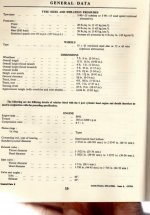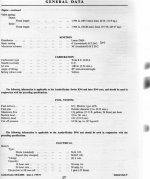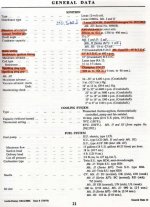What is the connection between the degree figures and the static ignition timing for adjusting the ignition?
It is the timing spot - the number of degrees before top dead center - where the spark plug fires (almost always referenced using the #1 cylinder). The timing can be set with the engine off, and the engine manually rotated to the spot where the correct timing mark - using one of the distances above - is then lined up to the engine's reference pointer.
Note: If an engine has a vernier adjustment on the distributor, then the engine can be static timed to TDC, and the vernier is then adjusted to the final timing BTDC - IF the vernier has enough adjustment. Sometimes you have to set the vernier to its center of adjustment, static time to the nominal advance, and then use the vernier to fine-tune the timing.
With the engine not running (but ignition is on), a light bulb or DC volt meter can then be used to set the static timing. You slowly rotate the distributor until the light just comes on, or the volt meter reads battery voltage, and that's the static timing. Search on-line for the way to do static timing. If I can find a link, I'll post it.
Edit: I found this link: https://www.howacarworks.com/ignition-system/adjusting-the-static-timing
Also, the engine can be timed while running at idle, using a strobe timing light, and the same timing marks, or to check and fine-tune by using the distributor's vernier adjustment. The strobe flashes when the #1 cylinder fires. If no vernier is present, the distributor is then rotated so the strobe-lit mark lines up with the reference pointer (the strobe's synced flash 'stops' the motion so you can see the mark). It is then then locked in that place. If present, the vernier can then be adjusted for the fine-tuning. That's it.
Changing the breaker (points) gap also changes the timing slightly, so the timing needs to be checked after adjusting the breaker gap. I hope I haven't further confused you.

 Hey there Guest!
Hey there Guest!
 smilie in place of the real @
smilie in place of the real @
 Pretty Please - add it to our Events forum(s) and add to the calendar! >>
Pretty Please - add it to our Events forum(s) and add to the calendar! >> 



 A friendly reminder - be careful what links you click on here. If a link is posted by someone you don't know, or the URL looks fishy, DON'T CLICK. Spammers sometimes post links that lead to sites that can infect your computer, so be mindful what you click.
A friendly reminder - be careful what links you click on here. If a link is posted by someone you don't know, or the URL looks fishy, DON'T CLICK. Spammers sometimes post links that lead to sites that can infect your computer, so be mindful what you click.